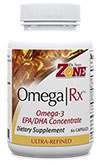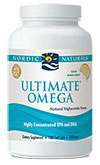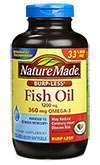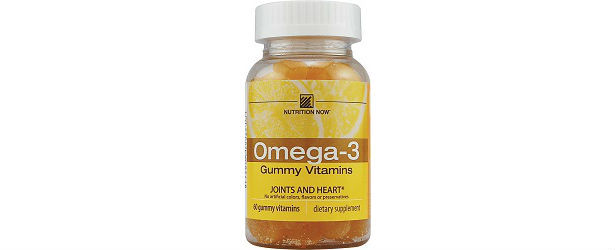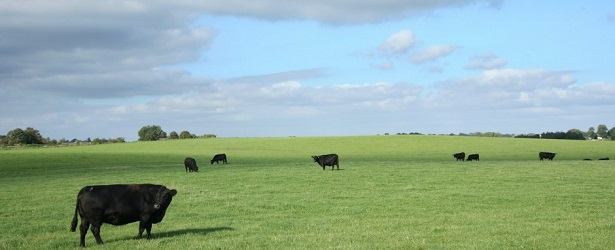
Omega 3 from Grain Fed or Grass Fed Sources?
If you are thinking about adding more Omega 3 foods to your diet, understand the difference between Grain versus Grass fed sources for the Omega 3. When we eat an Omega 3 rich food, it must be balanced with Omega 6 fatty acids in just the right amounts.
Our bodies do not produce Omega fatty acids, but they are necessary for good health. We need to get the proper ratio of 3 parts Omega 3 to 1 part Omega 6 fatty acids. Animals that we eat make Omega 3 and 6, but the proper ratio depends on whether they are fed grain or grass.
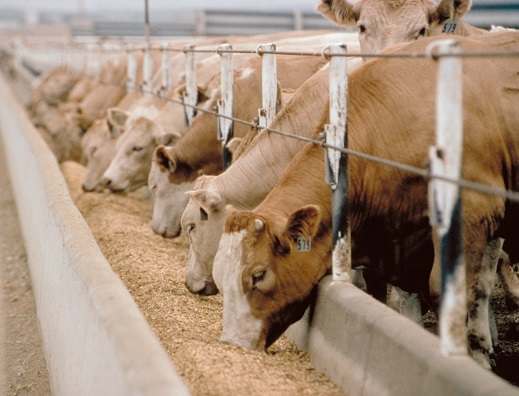 When beef cows are fed only grains, they tend to produce 20 parts Omega 6 fatty acids and only 1 part Omega 3 fatty acids. As you can see above, this is too much Omega 6 and unhealthy for the human body. When animals graze on grass naturally, the Omega three ratio is 1 part Omega 3 to 1 part Omega 6. Humans also tend to eat more nuts, flax, seeds, and vegetables that contain higher amounts of Omega 3 fatty acids.
When beef cows are fed only grains, they tend to produce 20 parts Omega 6 fatty acids and only 1 part Omega 3 fatty acids. As you can see above, this is too much Omega 6 and unhealthy for the human body. When animals graze on grass naturally, the Omega three ratio is 1 part Omega 3 to 1 part Omega 6. Humans also tend to eat more nuts, flax, seeds, and vegetables that contain higher amounts of Omega 3 fatty acids.
Studies now show the human diet has evolved into a mostly Omega 6 type diet, with nearly no Omega 3. Human health is in a downward spiral and the ratio is found to be 25 parts Omega 6 to 1 part Omega 3. The key to good health is to try to get the Omega 6 levels lower and raise the intake of Omega 3. This all begins with what the animals we eat are fed when they are raised.
Free Range Chickens are Higher in Omega 3
Chickens used to be a high Omega 3 food because they used to only be “free range” and eat a healthy diet of: insects, nuts, grass, and dried fruits that fell from trees. They never ate grains. Chicken eggs that come from free range chickens have a 1.5 Omega 3 to 1 Omega 6 ratio which is perfect! On commercial chicken farms, they are fed only grains and therefore produce eggs that contain 20 parts Omega 6 to 1 part Omega 3.
Be Careful of Omega’s in Fish too
While they say that fish is the best way to get Omega 3 fatty acids in the diet, not all fish is high in Omega 3. This is because fish raised commercially on fish farms are fed pellet diets made of grains. This raises the ratio to 4 parts Omega 6 to 1 part Omega 3. When you buy fish, check to see that it is wild caught and cold water fish. These wild caught fish eat “free range” style in the ocean and dine on algae, which is very high in good nutrition and vitamins. When fish is wild caught the Omega 3 is 15 parts and Omega 6 is only 3 parts.
Increasing Omega 3 While Lowering Omega 6
Grass is not a part of the human diet, but we need to eat less meat from animals raised on grains and more from animals that are raised on grass. The key to lowering Omega 6 is to drastically reduce the amount of Omega 6 foods in our diet. While reducing Omega 6, we need to be eating more foods that are high in Omega 3.
 This means decreasing Omega 6 foods such as; animals fed on: grain diets, vegetable oils, sunflower seeds, margarine, sesame seeds, shortening and creamy salad dressing. These are all high in unhealthy fats and throw the Omega balance off.
This means decreasing Omega 6 foods such as; animals fed on: grain diets, vegetable oils, sunflower seeds, margarine, sesame seeds, shortening and creamy salad dressing. These are all high in unhealthy fats and throw the Omega balance off.
While decreasing Omega 6 foods, increase your intake of Omega 3 foods like: grass fed animals, chicken that is free range, eggs from free range chickens, walnuts, flax products, wild rice (which is a type of grass high in Omega 3), wild fish, canola oil, and flax oil.
Try to eat winter squash such as; pumpkin, butternut squash, and acorn squash. Kidney and black beans are also high in Omega 3.
Conclusion
When it comes to grain versus grass for omega 3, you don’t need to graze on grass. You just need to decrease your intake of grain type foods and meat. Try to buy grass fed meats and lower your intake of Omega 6 foods. This will help you get the most benefits from Omega 3 fatty acids.
TOP 5
OMEGA3Supplements |
|||||
| Omega3 Premium | Dr. Sears OmegaRx | Purity Products | Nordic Naturals | Nature Made | |
|---|---|---|---|---|---|
| 1 | 2 | 3 | 4 | 5 | |
| Price (1 bottle) Price (4 bottles)(*best value) |
$49.95 $138.00 |
$50.95 $305.70 |
$46.95 $281.70 |
$69.95 $419.70 |
$25.95 $155.70 |
| Overall Rating | 99.85% | 89.20% | 82.60% | 76.30% | 72% |
| Effectiveness |





|





|





|





|





|
| Speed of Results | Extremely Fast | Good | Average | Average | Slow |
| Quality of Ingredients | Premium | Good | Good | Average | Unknown |
| Customer Satisfaction Evaluation | 99.40% | 84% | 79%% | 72%% | 61%% |
| Safety Evalutation | Safe for Use | Safe for Use | Safe for Use | Safe for Use | Safe for Use |
| Customer Service Rating |





|





|





|





|





|
| Reorder Rate | Highest | Good | Good | Average | Average |
| Return Policy | Risk Free | Risk Free | Risk Free | No guarantee | Unclear |
| Success Rate | 99.40% | 81.10% | 74% | 71.20% | 62% |

 Subscribe Now
Subscribe Now
